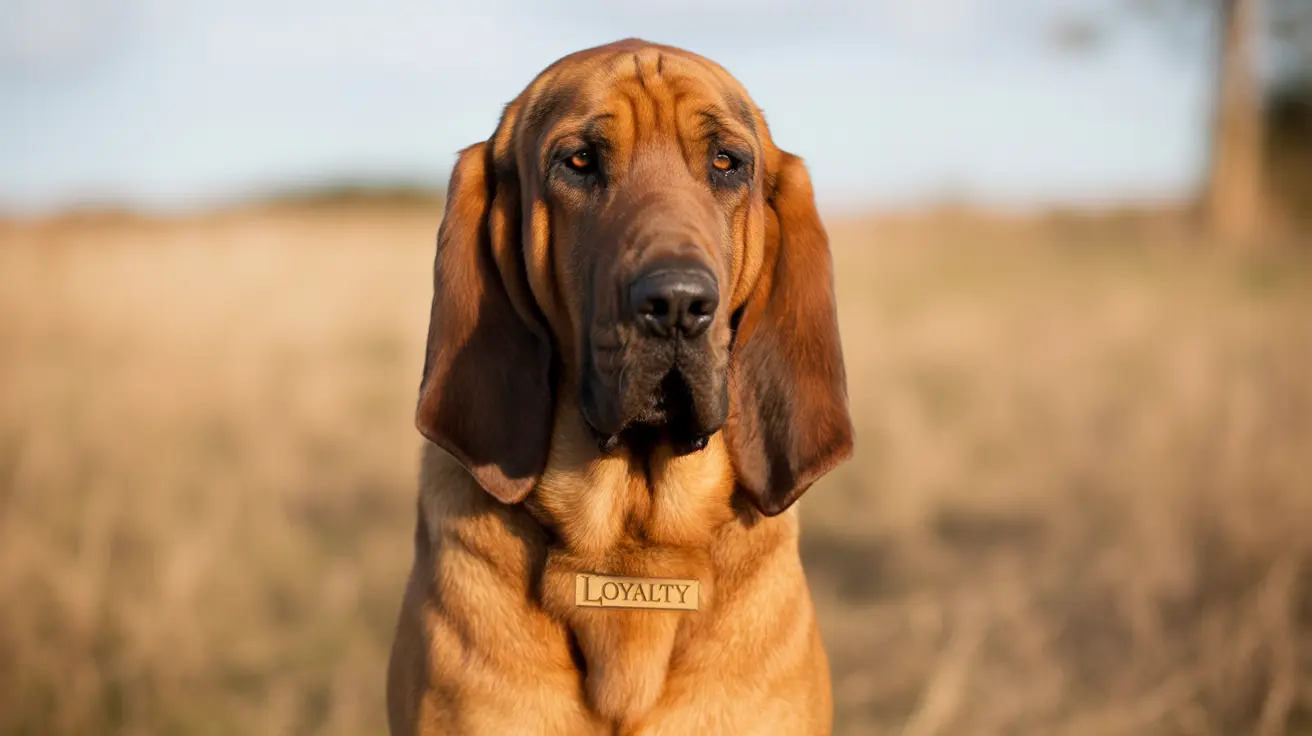The majestic Bloodhound, known for its exceptional tracking abilities and distinctive appearance, comes in several striking coat colors that contribute to its unique charm. Whether you're a potential owner, breed enthusiast, or simply curious about these remarkable dogs, understanding Bloodhound colors can help you appreciate the breed's rich diversity and heritage.
In this comprehensive guide, we'll explore the officially recognized Bloodhound colors, their genetic foundations, and what makes each variation special. We'll also address common questions about coat patterns and markings that both show dog enthusiasts and pet owners should know.
The Three Standard Bloodhound Colors
Black and Tan: The Classic Look
Black and tan represents the most common and traditionally recognized Bloodhound color combination. These dogs feature a distinctive black "saddle" pattern across their back, complemented by rich tan markings on their legs, face, and underside. The contrast between these colors creates the iconic Bloodhound appearance that has become synonymous with the breed.
The black pigmentation extends to the nose, eye rims, and paw pads, creating a cohesive look that breed judges particularly appreciate. This color combination served a practical purpose historically, helping these tracking dogs blend into forest environments during their hunting expeditions.
Liver and Tan: The Sophisticated Alternative
Liver and tan Bloodhounds display a beautiful brown variation where the black would typically appear. This coloration results from a recessive gene that dilutes the black pigment to a warm, chocolate-like shade. The tan points remain similar to those seen in black and tan specimens, creating an equally striking but softer appearance.
These dogs can show varying intensities of liver coloring, from light brown to deep mahogany, all while maintaining the characteristic tan markings that make Bloodhounds so distinctive.
Red: The Rare Beauty
The red Bloodhound represents the most uncommon of the three officially recognized colors. These dogs can range from light tan to deep mahogany red, sometimes appearing almost solid in color. Some red Bloodhounds may display a darker muzzle, either black or liver, while others maintain a uniform red throughout their coat.
Understanding Bloodhound Color Genetics
The inheritance of Bloodhound colors follows specific genetic patterns. The black coloration is dominant, while liver is recessive, requiring genes from both parents to appear. The distribution of color across the dog's body is controlled by separate genes that determine whether the dog will display a saddle pattern, blanket pattern, or more uniform coloring.
Acceptable Markings and Variations
While the main colors are well-defined, Bloodhounds may display some acceptable variations. A small amount of white on the chest, feet, or tail tip is permissible according to breed standards. However, large white patches or non-standard colors like brindle or merle are not accepted and would indicate mixed breeding.
Frequently Asked Questions
What are the officially recognized Bloodhound coat colors by the AKC?
The American Kennel Club officially recognizes three Bloodhound colors: black and tan, liver and tan, and red. These colors represent the breed's standard and are accepted in show rings.
How can I tell the difference between Black & Tan and Liver & Tan Bloodhound colors?
Black and tan Bloodhounds have true black coloring in their saddle area and facial features, while liver and tan dogs display a brown or chocolate color instead of black. The tan markings are similar in both variations.
Why are red Bloodhounds considered the rarest coat color?
Red Bloodhounds are rare because the genes responsible for this coloration are recessive and less common in the breed's gene pool. Both parents must carry the red gene for puppies to display this color.
Can Bloodhounds have white markings, and are they allowed in show dogs?
Small white markings on the chest, feet, and tail tip are acceptable in show dogs. However, large white patches or extensive white markings are considered faults according to breed standards.
How do genetics influence the coat color patterns seen in Bloodhounds?
Bloodhound coat colors are determined by multiple genes working together. The primary color (black, liver, or red) is controlled by specific gene pairs, while other genes influence the pattern and distribution of colors across the dog's body.
Understanding Bloodhound colors goes beyond mere aesthetics - it's part of appreciating this ancient breed's rich heritage and maintaining its distinguished standards. Whether you're considering showing your Bloodhound or simply want to understand your companion better, knowing these color variations helps you appreciate the unique characteristics that make each Bloodhound special.






